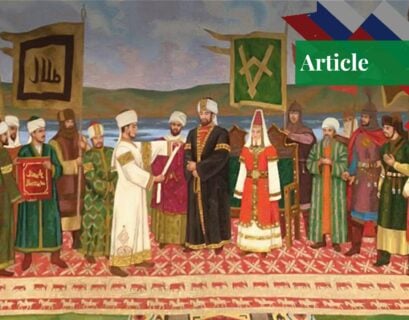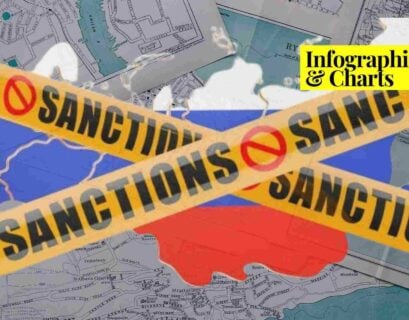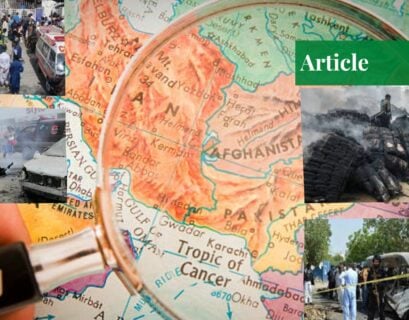Ms Alya Farooq is currently pursuing her undergraduate degree in International Relations from National Defense University Islamabad. She is also working with MAPS and Global Peace Chain as a content writer.
When It Rained Skins and Steels
Amsterdam’s Schiphol Airport was busy on 17th July 2014, where 283 people of all identities were busy getting their baggage inspected and tickets checked in, to board the Malaysian Airlines MH17 which was to land in Kuala Lumpur. Some of them were fresh school graduates and some were going to see their families. The flight took off as usual, with no abnormalities in sight.
It was around 16:20 local time, three hours into the flight when something abnormal occurred. The flight was passing over Eastern Ukraine when all of a sudden, a loud thud was heard, and after that, everything became history; the MH17 plane crash.
The site was unsightly, with body parts all scattered on the corn fields of Donetsk along with components of MH17. It seemed like a missile hit the plane, but nothing was confirmed. Considering the importance of the demystification of such a drastic event, this article digs deep into the investigation process and court hearings of the MH17 plane crash and provides details on how the case was solved and the culprits punished.
Legal Proceedings for the MH17 Plane Crash
In order to realize the collective concrete efforts against the attack, a joint investigation team was set up on 7th August 2014 by four states most impacted by the incident; Netherlands, Belgium, Australia, and Malaysia, along with Ukraine, where the happening occurred. The team was made responsible for investigating the specificities of the attack along with collecting evidence adequate to prosecute the perpetrators involved.
The case was defended by the Public Prosecution Service of the Netherlands and the hearings were to be held in Schiphol Judicial Complex. On 13th October 2015, the Dutch Safety Board, a Netherlands-based safety investigation organization, presented a detailed report in court that an armed conflict in Eastern Ukraine’s airspace was visible for months due to the Russo-Ukrainian conflict of 2014, where the airspace should have been completely restricted by Ukraine in light of the aircraft that were already destroyed in that area by the separatists.
Instead of complete blocking, Ukraine only prohibited low-altitude flying of civil aircraft. On 17th July 2014, the day of the incident, almost 160 commercial flights took off over that airspace. The report went on by mentioning that MH17 was flying over Eastern Ukraine when at 13.20 Coordinated Universal Time, it was hit on the left and above its cockpit area by a 9N314M warhead shot by a Buk missile present within 320 km square of the area.
The explosive material of the warhead destroyed the front of the airplane which ultimately led to a blast, resulting in the death of everybody on the spot and pieces of the airplane body falling within a 50-kilometer square of land. Moving on, in September 2014, the joint team confirmed that the missile was launched from Pervomaisk in Eastern Ukraine, an area controlled by the pro-Russian separatists at that time.
On 5th July 2017, Australia, Ukraine, Netherlands, Malaysia, and Belgium collectively decided to initiate the prosecution of suspects under the Dutch legal proceedings in the Netherlands. Ukraine agreed on passing on the prosecution rights to the Netherlands, which ensured that the perpetrators will be punished for all the victims of the attack.

The investigation took an interesting turn on 24th May 2018, when the joint team through an in-depth comparative analysis of characteristics possessed by the Buk Telar involved in the attack with other Russian and Ukrainian Buk Telars, found that the Buk Telar involved in the attack was recorded as it was joining the 53rd brigade of the Russian army, thus belonging to Russia. On the basis of these findings, the Netherlands started highlighting Russia as a culprit.
On 19th July 2019, the Public Prosecution Service Netherlands finalized four suspects for prosecution. Igor Girkin, who was the commander of the Donetsk Republic Army and former colonel of the Russian Federal Security Service, thus influential enough to be holding contact with Russia throughout. Secondly, Sergey Dubinsky, the head of Donetsk Republic’s intelligence service and former military officer of the Russian military intelligence department.
Thirdly, Oleg Pulatov, the deputy head of the Donetsk republic intelligence service and former military officer of the Russian military intelligence as well. Lastly, Leonid Kharchenko, commander of Donetsk republic’s combat unit. On 9th March 2020, despite being summoned to the court, none of the suspects appeared. Only Pulatov was represented by two lawyers in his absence.
The prosecutor announced their charges to be the crashing of MH17 which caused the death of 298 people punishable by article 168 of the criminal code of the Netherlands along with article 289 which punishes the murder of those 298 passengers. Moving on, from 8th June to 3rd July 2020, the prosecutors provided detailed accounts of how various forms of the investigation were conducted.
Investigation Techniques
Telecommunication Investigation
The security service of Ukraine (SBU) had been intercepting the telephone conversations of suspicious individuals involved in the armed conflicts in Eastern Ukraine long before the incident. These intercepted calls were especially listened to by the SBU after the MH17 plane crash, which revealed that Girkin, Kharchenko, and Dubinsky were conversing about getting a Buk missile for their defense.
Once a suspicious call was located, the SBU started investigating other calls on the same telephone line, focusing on both sides of the conversation along with recovering the metadata of the phones involved. The joint team further validated the conversations by finding the location of the telephones by analyzing the locations where they emitted signals and matching it with the places the perpetrators were at the time of the calls, questioning witnesses about the calls, and fact-checking by using open-source information.
The perpetrators were using secure means and multiple phone numbers, but the investigators were able to connect the dots. Pulatov used the phone number 380631212511 which was found through his account on OK.ru, a social network site in Russia, where he casually gave out his number under his account name Oleg.Pulatov.
Dubinsky used the phone number 380631213401, which was revealed through intercepted phone calls where he was called by the name “Dubinskiy” at certain points. Girkin’s phone number was revealed to be 380637087501. The investigators recognized his voice in an interview he gave under another name “Igor Strelkov” on TV and after searching for his identity, they found that Igor was actually Girkin.
Lastly, Kharchenko used the number 380660827518 by him sharing his name as “Kharchenko Leonid” in a call. All the above perpetrators were found talking about a “BUK” in their conversations.
Forensic Investigation
341 steel components found in the destruction area and 29 dead bodies were compared with different areas of 9N314M warhead of Buk missiles, to find out their point of origin.
In addition, Belgium Royal Military Academy in partnership with Netherlands Aerospace Centre conducted three arena tests where they calculated the angles and speed of the aircraft fragments as they flew in the air during the crash and concluded that an area of 75 kilometers in Southeast Ukraine was where the missile must have been fired in order to create the level of damage that it did.
Radar Investigation
The investigation took a considerably important route when the primary radar data of Russia, Ukraine, and NATO was requested to detect the presence of any missile. Russia unnecessarily delayed the provision of the data and provided the data of Ust-Donetsk air traffic radar, which did not show the presence of any military aircraft or missile near MH17.
Russia took it as an excuse to redirect the investigations by asserting that MH17 was not destroyed by any missile. Two experts hired by the Dutch Ministry of Defense and EUROCONTROL concluded that the absence of a missile did not mean MH17 wasn’t destroyed by it. Data from Buturinskaya radar where a missile could have been visible for a little while was never provided by Russia.
Satellite Investigation
Coming towards the satellite imagery, the joint investigation team tried to obtain images of the possible launch site and the area of the crash. Geoserve, a private company that sold satellite images from various different sources provided the team with images from 16, 20, and 21 July, where images from 17 July were not recorded and after that, apparently hindered by clouds. However, Google Earth provided the images on 17th July 2014.
To find more information, China, Russia, and the US were contacted; China did not have any imagery to share, Russia provided low-quality images, and requests for Donetsk and Luhansk area images where the crash occurred were ignored. In fact, Russia provided satellite images of a Ukrainian Buk system launching on 17 July 2014, but again, refused to provide a digital copy of those images, and the satellite images did not match with Google Earth and other sites’ information on missiles on those days.
The investigators also found a BUK TELAR whose code started with 2 and ended with 3 in Russia through several images, which could possibly be the one that shot MH17 down. A day after the attack, the US president clearly mentioned that the plane was shot down by a surface-to-air missile in the conflict-ridden area of separatists in Eastern Ukraine.
A US National intelligence officer also commented that the US intelligence community was able to detect an SA-11 missile six kilometers south of eastern Ukraine. As their ways are never disclosed, an exception was made when the Dutch National Prosecutor for counter-terrorism, intelligence, and security was called and briefed by the US officials on how the investigation was done.
Image investigation
The investigators obtained visual evidence including photos and videos by having access to mobiles and memory cards of the people who recorded them. These materials were sent to the Royal Netherlands Meteorological Institute, a weather forecasting organization of the Netherlands, which analyzed the color and lightning in the photos and aligned it with the cloud levels and overall weather of that specific area on 17 July 2014, when MH17 was shot.
Alternate Scenarios
The joint investigation team actually considered three scenarios: MH17 being struck by lightning, having a head-to-head collision with a fighter jet, or being hit by a surface-to-air Buk missile. The first two were ruled out, and the third one prevailed because the materials found on the destruction site and within the dead bodies are typically present within a Buk missile.
Closing Speech
On 20th December 2021, at the closing speech, major highlights of the investigations were made prominent. The Public Prosecution Service concluded that the Buk Telar was transferred from Russia via the border to Donetsk by a man called Andrey Chernykh who entered Ukraine as part of the logistics unit to carry military equipment ordered by DPR (Donetsk people’s republic) by Pro-Russian separatists during the 2014 Russia-Ukraine conflict.
The Telar was carried in a white Volvo truck, where it was moved to Pervomaiskyi and launched from there. All the soot components and metal fragments on the destruction site and within the bodies of the victims are confirmed to belong to Buk missiles. After MH17 was destroyed, Dubinsky was ordered by Girkin to quickly evacuate the “damaged tank” to Russia the day after the attack.
It was also concluded that the missile was indeed part of the 53rd brigade in Russia. The Public Prosecution Service also mentioned that although few military personnel get immunity for indulging in military attacks under state orders during an armed conflict, the defendants brought the missile themselves and used it for their own benefit in the armed conflict, which put them at a further disadvantage.
Final Verdict
As for the sentence, the criminal code 168 of Dutch law contained high punishment for crashing an airplane and causing the death of 298 people. The defendants had already attacked Ukrainian aircraft in the past and consciously decided to carry out further violence by shooting down MH17, knowing the potential destruction it would cause. They purposely directed their missile at the civil aviation path and ignored the prevention of civilian deaths.
At last, on 17 November 2022, the court delivered its verdict. Girkin, Dubinsky, and Kharchenko were sentenced to life in prison with a fine of 16 million Euros for downing the MH17 along with being responsible for the murder of 298 people on board. Pulatov, who was the only one sending his lawyers for defense, was acquitted on the basis of a lack of evidence that he was involved in destroying the plane.
As the criminals were tried in absentia and were still absent when the verdict was announced, it is less likely that they will serve their sentence. In addition, Russia has refused to extradite the sentenced individuals back to the Netherlands to be punished.
Conclusion
The MH17 plane crash should not be viewed merely as an isolated incident, as this event of the past generated certain similar patterns identifiable in matters of the present. Russia provided so-called witness statements on a Ukrainian missile launching from the area of Amvrosiivka on the day of the MH17 crash, to assert that the missile fired was indeed from Ukraine itself, but the witness had no background and could not be matched or confirmed by anything.
The Russian government had been paying “trolls” pretending to be journalists in spreading false information about the Ukrainian existence. Similarly, 75% of the 35.9 million tweets by 75 Russian official accounts were about manipulative materials questioning the independence of Ukrainian land. MH17 was downed by separatists involved in fighting against the Ukrainian government, where this “norm of war” of throwing missiles like stones from a sling, ended up taking innocent lives from areas completely uninvolved in the conflict.
If you want to submit your articles, research papers, and book reviews, please check the Submissions page.
The views and opinions expressed in this article/paper are the author’s own and do not necessarily reflect the editorial position of Paradigm Shift.


















